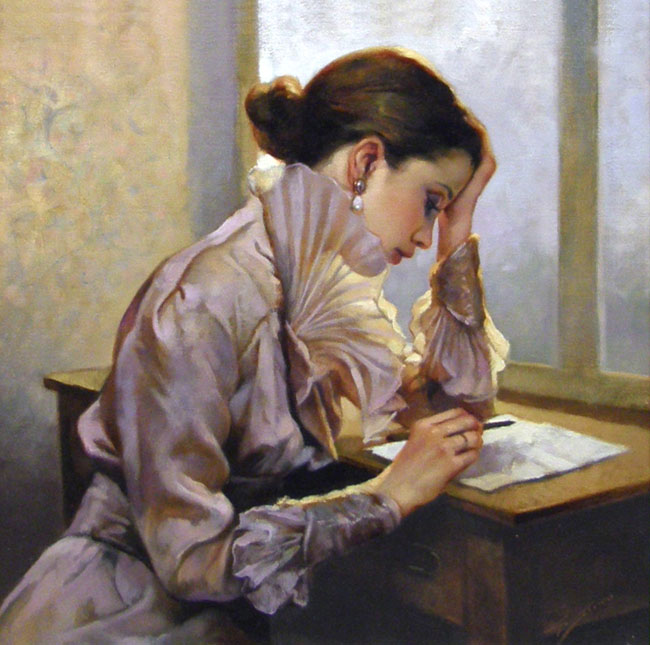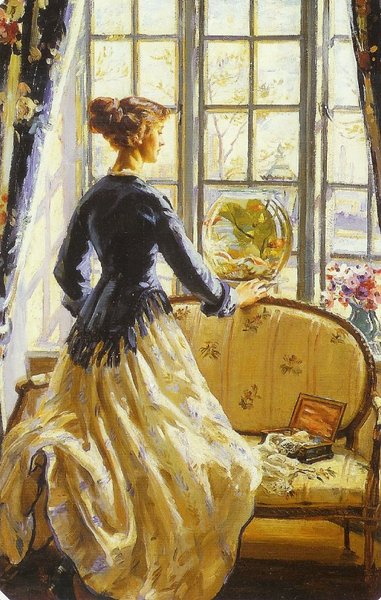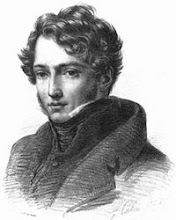 Mary Evelyn Pickering De Morgan, was a late-Victorian artist. Born mid-century in an England ruled over by Queen Victoria. She came to maturity during the unrest of 1914 and it was at this time she developed her personal and artistic philosophies. Throughout her career as a painter, she used literary allusion and allegory to express her strongly held views on contemporary spiritual, social and moral issues.
Mary Evelyn Pickering De Morgan, was a late-Victorian artist. Born mid-century in an England ruled over by Queen Victoria. She came to maturity during the unrest of 1914 and it was at this time she developed her personal and artistic philosophies. Throughout her career as a painter, she used literary allusion and allegory to express her strongly held views on contemporary spiritual, social and moral issues.Evelyn first exhibited her work at the Dudley Gallery in 1876 with her painting St. Catherine of Alexandria. Following this, she was one of the few female artists invited to be an exhibitor at the new Grosvenor Gallery in 1877 where her painting Ariadne in Naxos was displayed in the company of works by Spencer Stanhope, Edward Burne-Jones and George Frederick Watts.
In the early 1880s, Evelyn moved her studio from her family home in Bryanston Square to the popular Trafalgar Studios in Manresa Road, Chelsea. During this period, she lived as a professional artist in London with periodic trips to Italy where she would absorb the influences of the early Italian masters.
Some time during the mid 1880s she met the ceramic designer William De Morgan (1839-1917) and his family. This introduction to the bohemian and intellectual De Morgan family was clearly a turning point in her life. Her future mother-in-law, the spiritualist and social activist Sophia Frend De Morgan (1809-1892) became her informal mentor, helping to further develop the younger woman’s interest in spiritualist practices and in social reform.
In 1887 Evelyn married William De Morgan. Despite the age difference theirs was a harmonious and mutually supportive marriage. In addition to their artistic pursuits, they shared a well-documented sense of humour and an idealistic spirit.
During her lifetime Evelyn De Morgan produced approximately 102 oil paintings and over 300 drawings. At first glance, works like Harmonia and Eos appear to be that of a typical mid-century literary painter influenced by the work of Spencer Stanhope, Watts and Burne-Jones. Consequently, this was the way in which most contemporary critics assessed her paintings: Many do reflect the usual conventions and literary subjects of late Victorian art with its Pre-Raphaelite traces and neo-classical tendencies. However, looking closer, one discovers Symbolist works that employ the language of Christian allegory to reveal the artist’s engagement with the contemporary issues of her time.
The nexus between spiritualism and feminism during the late Victorian era influenced Evelyn, as well as her fellow female artists. She sought new heroines with which to construct her own images of Victorian womanhood. Hence, she painted portraits of strong-minded biblical and classical women such as Ruth and Naomi, the Virgin Mary, Medea, Ariadne, Cassandra and Helen of Troy.
In addition to these portrayals, Evelyn sought a new heroic female type, which could embody spiritual empowerment. As a result, she discovered the early Christian saints, especially virgin martyrs, drawn from books such as Anna Brownell Jameson’s The Poetry of Sacred and Legendary Art (1848-1864).
For Evelyn, who had struggled to overcome the limitations of gender and class to find fulfillment, the figure of the female martyr seems to have become a particularly apt symbol of feminine spiritual power and social responsibility. Consequently, she created paintings such as St. Catherine of Alexandria, A Christian Martyr, and St. Christina Giving Her Father’s Jewels to the Poor, which tell stories of heroic female resistance, struggle and triumph.
Evelyn was not content to merely illustrate the lives of the saints: Using the virgin-martyr as a kind of personal icon for spiritual and artistic freedom, she devised other more personally expressive allegories such as The World’s Wealth, The Thorny Path, and The Gilded Cage, which feature women at moments of existential crisis.
Evelyn and her art is worth knowing. I love her dearly and hope my post here today introduces her to at least one who has never had the pleasure.
A Romantic Saint Valentine's Day to All.
All my love,
Simone


















What a master! Striking, beautiful art of the highest order. MEDEA is my particular favorite of the paintings you posted.
ReplyDeletebeautiful post Simone, did you know that i know nothing about Evelyn de Morgan?
ReplyDeleteHappy Valentine's day, dearest Simone,
xxoo
Near Farnham, where I went to Art School, there is the Watts Memorial chapel, built and decorated by Mary Seaton Watts (and locals) after the death of her husband, G.F. Watts, the painter. Do you know about it? Here's the website address:
ReplyDeletehttp://www.wattsgallery.org.uk/chapel.html
Beautiful paintings and your post. I can see how she would be a great influence. Wishing you a Happy Valentine's Day.
ReplyDeleteSo informative. Thank You.
ReplyDeleteWhat a shame that I haev never even heard of her, but I sure have now. And her art is lovely, thank you Simone
ReplyDeleteWhat gorgeous paintings!!
ReplyDeletePS - don't know if you got the message from the last post - I've left you an award over at my blog :)
this post enriched my life..
ReplyDeletethese pictures are more then beautiful, they speak to me of something I will never know...
Such beautiful paintings.
ReplyDeleteI always learn something beautiful when I visit your blog...
ReplyDeletethe paintings are beautiful <3
ReplyDeleteThey're breathtaking. Such detail! Thanks for showing these, they were a wonderful way to open my morning, and I learned something too.
ReplyDeleteMy love to you all and I hope you each had a lovely Valentine's Day.
ReplyDeleteWarm regards and my thanks to each of you for calling.
Sincerely,
Simone
William is so much better known than Evelyn; maybe that should change.
ReplyDeletere: Tom Stephenson's comment. This is also the location of the G F Watts Museum/Gallery. Take the road from Farnham to Guildford (Hogg's Back) and you will see it signposted.